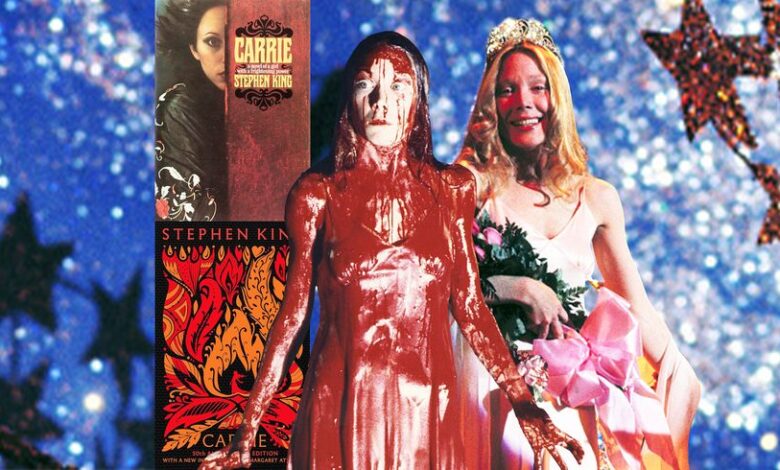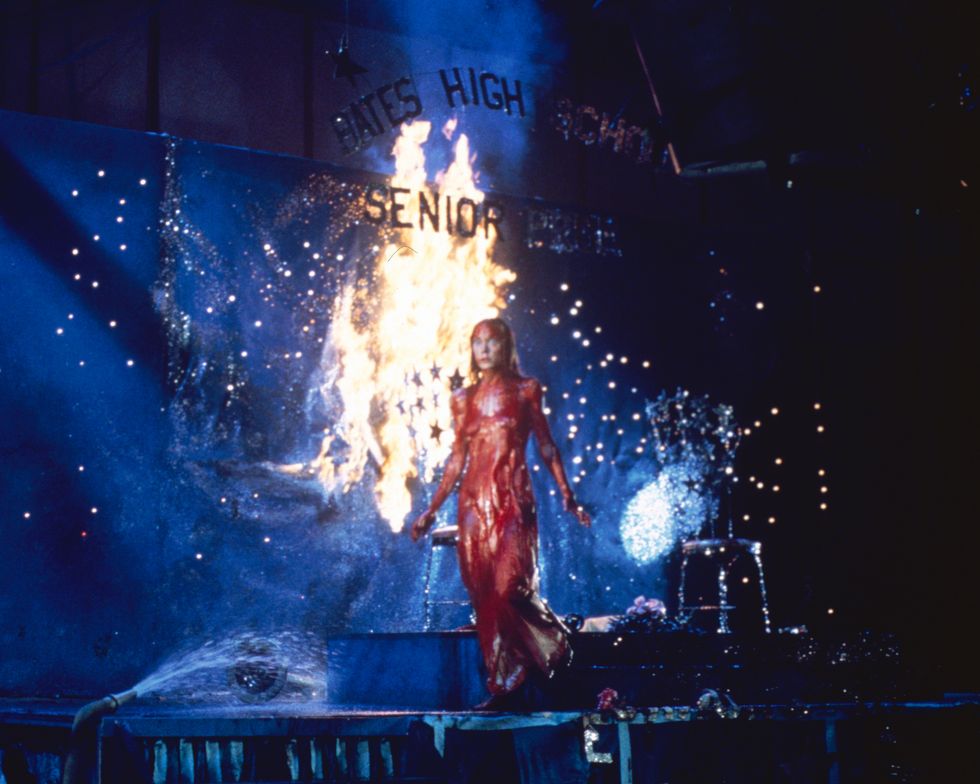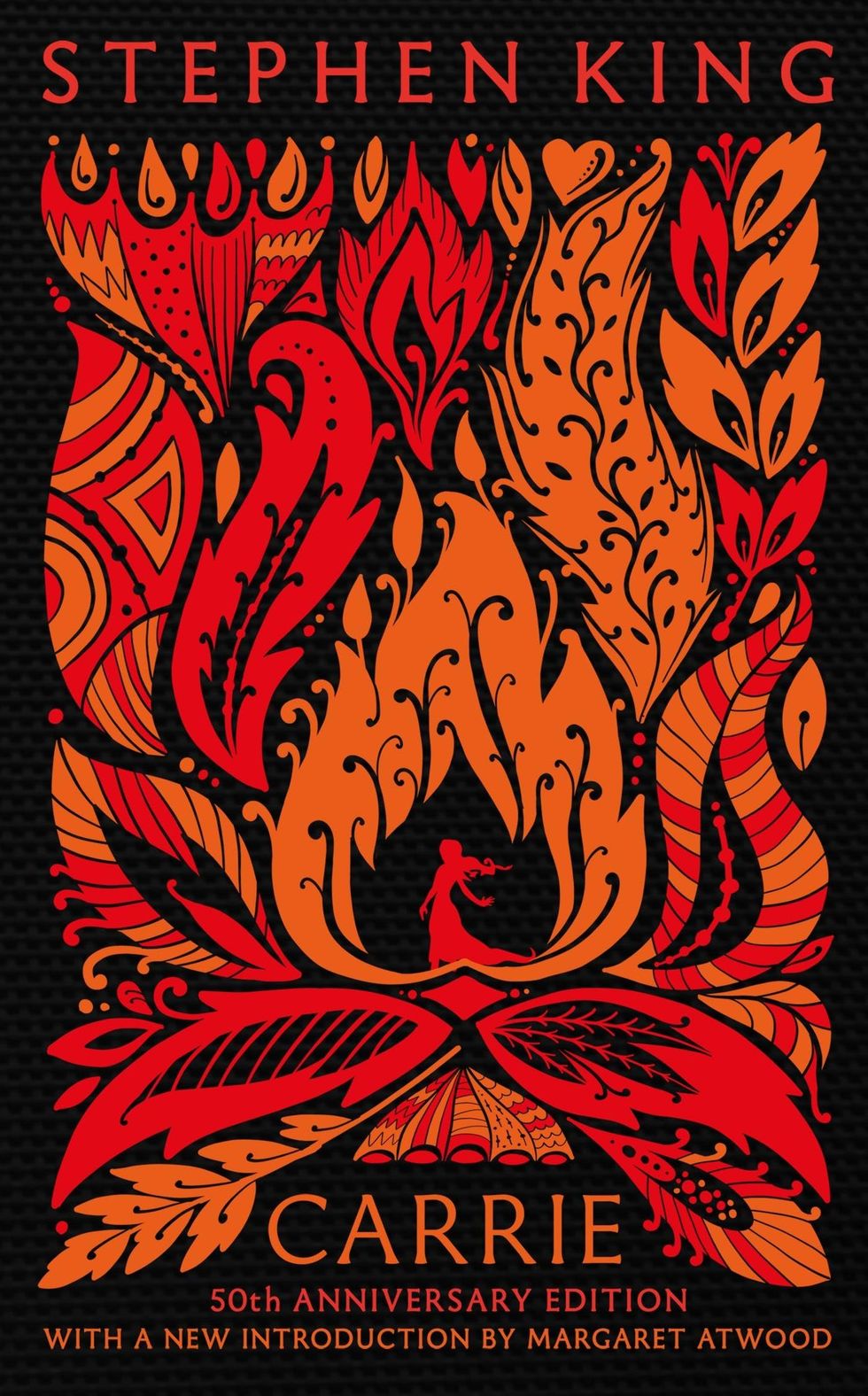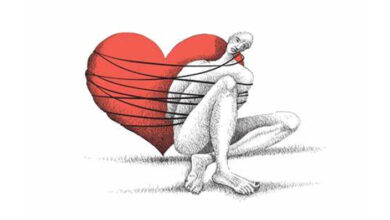Why Carrie Is Still Scary as Shit

There are two great origin stories in the history of horror fiction. The first took place in Switzerland in 1816, but it began with a volcanic eruption on the other side of the world. Ash from Mount Tambora wrapped the planet in shade, leading to “the year without a summer” and forcing a rabble of Romantic poets inside their vacation home on the banks of Lake Geneva. Bored, they took to writing scary stories, and a nineteen-year-old woman wrote down a “tale that haunted [her] midnight pillow.” It became Frankenstein, which revolutionized horror, birthed science fiction, and ensured that Mary Shelley would forever reign as the queen of Gothic fiction.
The second story occurred 156 years later. It’s also an underdog tale, and though it may not include an actual volcano, its impact was no less seismic. As the story goes, sometime in the winter of 1972, another young woman was walking past the trash can in her husband’s writing room. Room may be a strong word for what was essentially a cubby in their trailer home, but it was there that the woman’s husband pounded out stories on an Olivetti typewriter, sending them to men’s magazines to supplement his income from teaching English and working shifts at the local laundry. The woman noticed a sheaf of papers in the trash and, in an uncharacteristic move, she fished the pages out, rolled them flat, and read them. When she asked her husband why he had discarded this particular story, he told her that he knew “jack shit about high school girls.” She told him he was onto something and that he should keep writing. Luckily, he did.
That woman’s name is Tabitha King. Her husband is Stephen. The story is titled Carrie. And it changed the world.
Carrie is fifty years old today. It’s a rare anniversary for any living author, but doubly so for one who is still pumping out at least a book a year and getting some of the best reviews of his career, too. Since April 5, 1974, Stephen King has gone on to restructure the architecture of horror around himself with more than seventy books, featuring some of the genre’s most iconic characters and scenes that have burrowed their way into the very guts of popular culture. But Carrie is where it all started for King, with the slim story of a bullied teenager and the retribution she unleashes through her budding telekinetic powers. The book climaxes in a violent conflagration, but that fire burns on beyond the final pages, a fitting metaphor for the furnace of contemporary horror that King and Carrie ignited.
As well as influencing countless fictions, the book spawned three film adaptations and a stage musical. Brian de Palma’s 1976 film remains the high point. The climactic image of Sissy Spacek, wide-eyed and drenched in pig’s blood at the prom, is a landmark of the era, rivaled only by The Exorcist’s head-spinning contortions. It’s a scene endlessly deployed and alluded to in other horror media—It Follows, Buffy the Vampire Slayer, and, of course, the inevitable The Simpsons Treehouse of Horror riff—but it can also be spotted in such weird places as Pixar’s Monsters University and a My Little Pony comic book.
This draws me back to my comparison of Carrie and Frankenstein. The parallels don’t end with their interesting origin stories. Both novels are now irremovable elements of the cultural consciousness. Both begin in well-lit, sanitized spaces that are stained by blood and bodies. Just as Frankenstein’s creature starts life in the laboratory, the real Carrie White is “born” in the steam and spray of the girls’ shower room, where her first period evokes cruelty from her peers and invokes her own power.

Sissy Spacek in Brian De Palma’s Carrie.
They are also both monster stories. Guillermo del Toro–who knows a thing or two about the subject–famously described monsters as “the patron saints of our imperfection.” It’s easy to assume he was thinking of Frankenstein’s poor creature at the time, but maybe he had Carrie in mind, too. Carrie represents the outlier, the reject, the victim, who we are all afraid to be. She exposes the hypocrisy of the normal, the pull of conformity and mob rule. Her death shows us that monsters are not always who or what we expect them to be. It’s a lesson that has endured for the past half century.
All that said, it’s tricky to map the practical extent of Carrie’s impact. People in search of a nice, neat narrative enjoy the idea that, had Tabitha King not dredged those pages from the trash, all of contemporary horror—and maybe even the entire landscape of pop culture—would be different. The assumption is that, if King had not written Carrie, he would not have gone on to write the many books that have girded and guided the horror genre for the past fifty years.
I find the idea fairly ridiculous myself. In an afterword to the novel, Tabitha describes how at that point, King was already writing for at least a few hours every night. In his memoir, On Writing, King admits that the risk of Carrie was in “wasting two weeks, maybe even a whole month, creating a novella I didn’t like and wouldn’t be able to sell.” A month! That’s all. If King had binned this story, he would surely have gone on to write something else, then something else again. After all, he’d already written three (then-unpublished) novels before Carrie. Sooner or later, he would have made his mark. His imagination has proven too undammable to believe otherwise.
But Carrie did sell, and it sold big. In the early seventies, the $400,000 he received for the paperback rights must have been an unimaginable fortune at a time when $200 short-story sales were sometimes the only thing standing between the King family and crisis. Margaret Atwood, who has written a new foreword for the fiftieth-anniversary edition of the novel, considers this financial cliff-edge a crucial part of the book’s success. “Among many other things,” Atwood tells me, “Carrie is a study of what it’s like to be hardscrabble poor and brutally marginalized in America. It’s territory King has returned to again and again. He knows it inside out. He grew up in it.”
The money from Carrie released that economic pressure. It allowed King to concentrate on writing full-time, and in the next six months alone, he wrote two entire novels. One of them was ’Salem’s Lot, and the rest is history.
It’s old history, though, told repeatedly in the many forewords and afterwords appended to this novel over the years. What isn’t discussed as often is Carrie’s unique legacy: the elements that still reverberate in contemporary horror five decades down the line.
Small towns, bullies, supernaturally gifted children, a skin of normality pulled across the ugly bones of the world: These are themes we see again and again in King’s work. Carrie White may have telekinetic abilities, her mother may be lost in a fog of extreme religious mania, the book may even end in a holocaust of pig’s blood and fire, but so much of the nightmare is mundane and tragically human. That flat reality is evoked both in the story’s details and in its structure, which intersperses long narrative sections with an assemblage of faux documentation (including excerpts from a fictional Esquire article). It presents that most Kingian of worlds: brutal reality, temporarily disturbed by extraordinary moments of human goodness, badness, and otherworldly forces. I’ve long argued that King is an American realist at heart—that the supernatural is mostly a tool he uses to stir the human drama that really interests him. I once asked him if the theory held any water. “It doesn’t even leak,” he replied.
For evidence, you don’t have to look any further than the halls of Carrie’s Chamberlain High. King has no truck with the idealized teenagers of Grease or Happy Days, The Breakfast Club or Glee, where cliques collapse in an emotionally satisfying song-and-dance of hard-won respect. Chamberlain High is adolescence red in tooth and claw. It’s a pit of vipers, a gladiatorial arena, where conformity trumps community and the popular people decide the fate of others with a thumbs up or down. In Chris Hargensen, rich girl and head bully, King immortalized an archetype that persists in pop culture. Watch Mean Girls and you’ll find her shadow in Regina George’s angry, confident sexuality. Kathryn Merteuil in Cruel Intentions is Chris with even more money. Young Adult’s Mavis Garvey is what happens when Chris grows up to learn that beauty fades and life disappoints.
If Chris is Carrie’s high school devil, Sue Snell is the book’s imperfect angel, who makes the ultimate teenage sacrifice by asking her boyfriend, Tommy, to take Carrie to the prom in her place (without realizing that she’s sparing herself the true sacrifice by staying at home and not burning to death). Sue is a complex character—as Tabitha describes it in her foreword, she is an attempt by King to write a woman who isn’t “a bitch or a zero.” She’s mature and kind but not immune to the mob frenzy of her peers. She’s sexually active, but unlike Chris, she seems to take little pleasure from it. Indeed, I’ve argued elsewhere that the sex scene between Sue and Tommy ranks among the most sophisticated treatment of sex in all of King’s work. Rather than offering the lurid thrills common to the era’s trade paperbacks, King uses the scene to decode Sue’s anxieties about the suburban conformity awaiting her after high school.
It’s arguable that Sue is a prototype for the Final Girl: the capable, sensible and—most important—virginal archetype that would dominate teen horror movies for the next three decades. Remember, King’s novel was released in 1974, the same year as the proto-slasher Black Christmas—another film that had far more well-rounded female characters than those who would follow in Halloween and its many imitators. In those films, as parodied decades later in Scream, to have sex is to die. To transgress is to die. Sue Snell bucked that trend before it even began.
It’s hard to believe that King pulled this off in his mid-twenties. At an age when, as Tabitha writes, “we hadn’t yet scraped high school off our shoes,” King was able to depict girlhood without simplification, glorification, or titillation. Okay, there may be a bit of titillation. (Rare are the breasts that go undescribed in this book.) But on the whole, it’s a remarkably textured treatment of a world that was more typically rendered as black and white, or in reassuring sepia tones. It’s no surprise that King considers William Golding’s The Lord of the Flies an early and profound influence; few other books have the guts to look so bluntly at what kids are willing and able to do to one another.
The Horror with a capital H occurs on prom night, as Carrie rains fiery death down on her tormentors and complacent peers alike. As the rumor goes, that climax was originally a whole lot sillier, with Carrie growing to Godzilla-like proportions and batting airplanes from the sky. Thankfully, someone somewhere along the way had a sensible word, and King toned it down to the more realistic microcosmic apocalypse we know today. But regardless of how the book ends, anyone who has read it knows that the true agony is found in the first ten pages, when Carrie White dissolves into panic after getting her first period, only for her classmates to pelt her with sanitary products. That scene is horror of a very specific tenor: shock at the malice of high school girls, genuine revulsion at the blood running down Carrie’s legs, and the awful recognition of our own participation in this cruelty. Like Sue Snell, who finds herself “throwing and chanting with the rest, not really sure what she was doing,” the reader is equally swept along.
So much of Carrie’s profound horror is in seeing ourselves in her tormentors.
Each time I read this book, even knowing what will come, I find myself impatient, almost angry at Carrie for her hesitance, her passivity, for not knowing what she should already know about her own body and the world. That possibly verges on misogyny; I hope not. It’s certainly hypocrisy, considering my own relative ignorance about the workings of the female body when I was Carrie’s age. But whether I like it or not, it’s a visceral reaction that King draws from me against my will. He demands it, and I can’t help but think my reflex is not unique. So much of Carrie’s profound horror is in seeing ourselves in her tormentors. King forces us, for a moment, to share their disgust and contempt. We can smell the prey’s fear, and we’re ready to join the hunt.
Almost immediately after, King shows us Carrie as a human being, a victim of bullying, and a person with her own rich inner life. Whenever I read the novel, I guiltily recalibrate my first reaction and begin again the process of falling in love with this young girl plagued by acne, an insane mother, and blossoming power. But I never forget how it felt to be among those girls in that shower room, chanting PLUG IT UP, momentarily secure in the in-crowd.
It’s empathy, pure and simple—for both monster and victim, however transposable their positions may be. Empathy is the oil this book runs on. It’s the engine that has powered King’s entire career. But what a challenge it must have been, to find an understanding of those young women whose lives and bodily functions he knew so little about.
Then again, what do I know? I’m just another guy, after all, writing about this book and its women. But when I asked some of the most prominent women in horror about Carrie’s impact and authenticity, the report card came back with all A’s.
Catriona Ward, author of The Last House on Needless Street, Sundial, and Looking Glass Sound, tells me that Carrie “was the first book that captured that special anguish and isolation unique to adolescent girls.” Somehow, according to Ward, “Stephen King understands that for teenagers, every day feels like blood and disaster. It’s remarkable how much he knows about the perilous, unknown country you travel through to reach adulthood.” Ward is another master of gothic psychologies, so if King’s illumination of that unknown country is good enough for her, few should dare argue.
On the surface, Elle Nash’s work couldn’t be further in style from King’s. Her debut, Animals Eat Each Other, details the unraveling of a violent sadomasochistic relationship. Gag Reflex is focused on late teenage anorexia. Her 2023 breakout, Deliver Me, is grim body horror about a young pregnant woman’s macabre life and social circle. Nash’s writing is experimental, extreme, and worlds away from Carrie’s shadowy Americana. However, look closer and Carrie is there in Nash’s misunderstood young people, tussling desperately with their changing bodies and emerging potencies. She credits King’s book as “one of the first [she’d] come across that expresses the feminine rage that comes from being totally controlled in one’s life.” When asked, she’s happy to elaborate that, though she doesn’t consider herself a King devotee, “something about the prose in this particular novel of his has drawn me back to it over the years, especially in the way Carrie’s lack of agency and the tight, wild turn of her confidence at her newfound strength is rendered from her point of view.”
For Rachel Harrison, a writer who excels at stories of uncomfortable female rage, “Carrie is catharsis.” She explains, “As a girl in adolescence, the last thing I felt like I had was control. Over my body, over how people saw me and treated me. Carrie White represented the promise that though people might perceive me as powerless, that doesn’t mean I am. It was a game changer for me as a young horror fan to read how a teenage girl could inspire fear rather than just suffer from it. It resonated with me then and resonates with me now, in my life and my work.”
You only need to read Harrison’s most recent novels to sense that resonance. Such Sharp Teeth centers on a young woman who is plagued with wolfish tendencies, complete with all the anger and frightening new potential that Carrie channels through her own wild talent. Black Sheep offers another mother-daughter relationship made monstrous by religious zealotry, though this time it’s a touch more diabolic. The key difference between Harrison’s novels and King’s, however, is the agency of her protagonists. Harrison’s young women share Carrie’s bitterness, anger, and capacity for revenge, but they have a control that she does not over both their world and their selves. They act rather than react, and they possess the power to offer forgiveness. These days, this kind of story doesn’t have to be a tragedy or a cautionary tale. Carrie burned so these women could live.
Carrie burned so these women can live.
These are just a few prominent voices giving their endorsement, but Carrie’s influence is everywhere. You can find the footprint of the book and its characters throughout contemporary media. Teen culture still turns to the iconic “Carrie at the Prom” imagery, both to lampoon it and for earnest scares. Glee dropped red slushy on its prom queen; meanwhile, an episode of Riverdale featured the cast singing songs from the Carrie stage musical. Stranger Things draws repeated allusions between Eleven and Carrie, with their anger and pyrokinetic potential. At the more sober end of the spectrum is Rose Glass’s debut feature, Saint Maud, in which Morfydd Clarke’s tortured Maud combines Carrie’s alienation and her mother’s fanatical faith. To my mind, it’s no coincidence that the film ends in a horrific immolation. Maud is a Carrie who never got to go to the prom. She has no one to burn but herself.
King captured something in his debut that still speaks to us today. Maybe it’s just that he wrote the right book at the right time, when the world was growing newly hungry for horror after so many years of real-world war. I don’t think so, though. I think it’s the empathy, the under-the-skin understanding of how society huddles around the center, and how it feels to be on the outside. That never changes. Especially, I suspect, for women.
So maybe I’m wrong when I say it didn’t have to be this book. Not for King; I remain convinced that had he not published Carrie, he’d still have been just as successful. But for pop culture, for the trajectory of horror fiction and adolescent representation, and—dare I say it about something written by a man—for the development of female characters in this genre, maybe it did have to be this book. Rosemary’s Baby and The Exorcist had already created a booming appetite for the genre, but as wonderful as they both are, they still conceived of horror as a conflict between grand wickedness and human good, with the battleground being the bodies of powerless young women. It took Carrie to drag horror down to a granular American level of petty, everyday evil, and to redefine the female body not as territory to be contested but as the most powerful weapon in the world.
As Tabitha King once wrote, “Who knew so much could come out of some girl having trouble with her period?”



